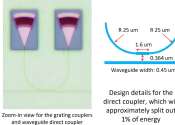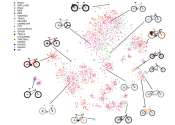Novel battery storage with solar power could be low-cost clean energy solution
The costs of a type of battery storage suited to supporting the decarbonization of emerging economies have been predicted by Sheffield researchers.
Jul 6, 2023
0
23
Engineering

The costs of a type of battery storage suited to supporting the decarbonization of emerging economies have been predicted by Sheffield researchers.
Jul 6, 2023
0
23
Software

The security of data relies on the use of proper, well-executed cryptography—the science and art of constructing algorithms that make information safe from prying and possibly malicious eyes.
Sep 14, 2022
0
48
Engineering

Imagine driving home after a long day at work. Suddenly, a car careens out of an obscured side street and turns right in front of you. Luckily, your autonomous car saw this vehicle long before it came within your line of ...
Aug 11, 2022
0
92
Hardware

A combined team of engineers from Tsinghua University and the Beijing National Research Center for Information Science and Technology, both in China, has developed a large-scale diffractive hybrid photonic AI chiplet for ...
Electronics & Semiconductors

A research team led by the School of Engineering of the Hong Kong University of Science and Technology (HKUST) has developed full-color fiber light-emitting diodes utilizing perovskite quantum wires (PeQWs), paving the way ...
Aug 12, 2024
0
26
Machine learning & AI

Today's artificial intelligence systems used for image recognition are incredibly powerful with massive potential for commercial applications. Nonetheless, current artificial neural networks—the deep learning algorithms ...
Jun 30, 2022
0
82
Internet

Microsoft on Thursday said it would integrate OpenAI's soon to be released Dall-E 3 image creation tool into its Bing search engine, in its latest effort to use artificial intelligence to compete with the almighty Google.
Sep 21, 2023
0
38
Engineering

ChatGPT and other deep generative models are proving to be uncanny mimics. These AI supermodels can churn out poems, finish symphonies, and create new videos and images by automatically learning from millions of examples ...
Oct 19, 2023
0
86
Engineering

The health of a plant's vasculature depends on its capacity to respond to environmental stimuli. Plant inspired synthetic microfluidic systems have only rarely demonstrated their environmental responsiveness. In a new report ...
Hardware

Precast structures are like giant lego blocks made of concrete that are manufactured in a factory to enable seamless construction at a building site. Modern urban construction projects rely heavily on precast concrete structures ...
Mar 9, 2023
0
7
An engine is a mechanical device that produces some form of output from a given input. An engine whose purpose is to produce kinetic energy output from a fuel source is called a prime mover; alternatively, a motor is a device which produces kinetic energy from other forms of energy (such as electricity, a flow of hydraulic fluid or compressed air). A motor car (automobile) has a starter motor and motors to drive pumps (fuel, power steering, etc) – but the power plant that propels the car is called an engine. The term 'motor' was originally used to distinguish the new internal combustion engine -powered vehicles from earlier vehicles powered by a steam engine (as in steam roller and motor roller).
Military engines included siege engines, large catapults, trebuchets and battering rams.
This text uses material from Wikipedia, licensed under CC BY-SA